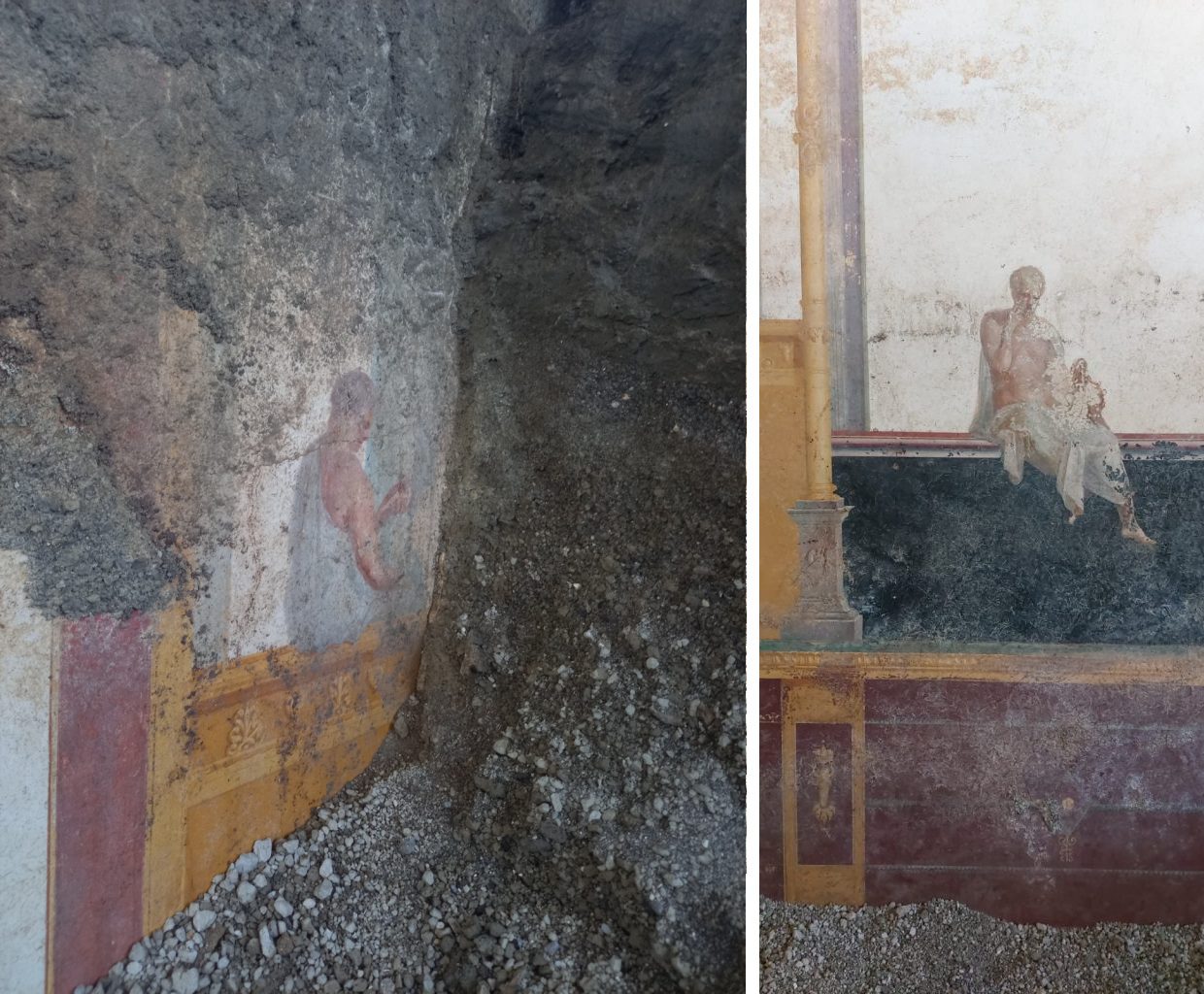Archaeologists conducting excavations in the Villa San Marco, a high status Roman villa on the outskirts of Stabia, are revealing new insights into the last moments before the eruption of Mount Vesuvius.
Stabiae was an ancient Roman town and seaside resort near Pompeii on the eastern end of the Bay of Naples. Like Pompeii and Herculanium, Stabiae was largely buried during the AD 79 eruption of Mount Vesuvius in thick tephra and ash.
Pliny the Elder, a Roman author who wrote the encyclopedic Naturalis Historia (which became an editorial model for encyclopedias died at Stabiae during the eruptions, but many of the town inhabitants were spared and resettled. Publius Papinius Statius recites in a poem to his wife – “Stabias renatas”, meaning Stabiae reborn.
Recent excavations at the Villa San Marco, a large Roman villa complex which covers more than 11,000 square metres, have been investigating the previous building phases of the site to further understand the chronology and extent of the entire structure.

The villa’s original construction dates back to the Augustan Age and was focused on a tetrastyle Ionic atrium. Later, during the Claudian period, expansions incorporated a panoramic garden and a swimming pool that were enclosed by a three-sided portico, topped with a colonnade featuring spiral columns.
As a result of these additions, the layout of the villa underwent significant changes, shifting away from the previous axial plan and decentralising the entrance and the original core.
The main entrance, now buried, used to open onto a porticoed courtyard that provided access to the tablinum. From there, one could proceed to a tetrastyle atrium, leading to four small cubicula. Additionally, the thermal baths were accessible from the atrium, but their alignment deviated from the villa’s main axis due to their connection with the pre-existing street running in front of the structure.
Since March 2023, archaeologists have excavated the end part of the upper portico, revealing paintings with seated figures and large parts of the collapsed walls. The portico was buried in lapilli tephra (volcanic rock), allowing the paintings to be preserved along with a flight of the spiral columns.
According to a press announcement: “Following the story provided by the stratigraphies of lapilli and collapses, and by the sequence of pyroclastic flows, it is also possible to reconstruct the last hours of the villa’s life.”
“Despite the dramatic destruction, the life and luxury of the villa resurface in the chromatic ranges of the paintings on the walls and ceilings, in the stuccos, in the capitals, in the precious coatings and crowning of columns and roofs,” added the researchers.”
Header Image Credit : Pompeii Sites





